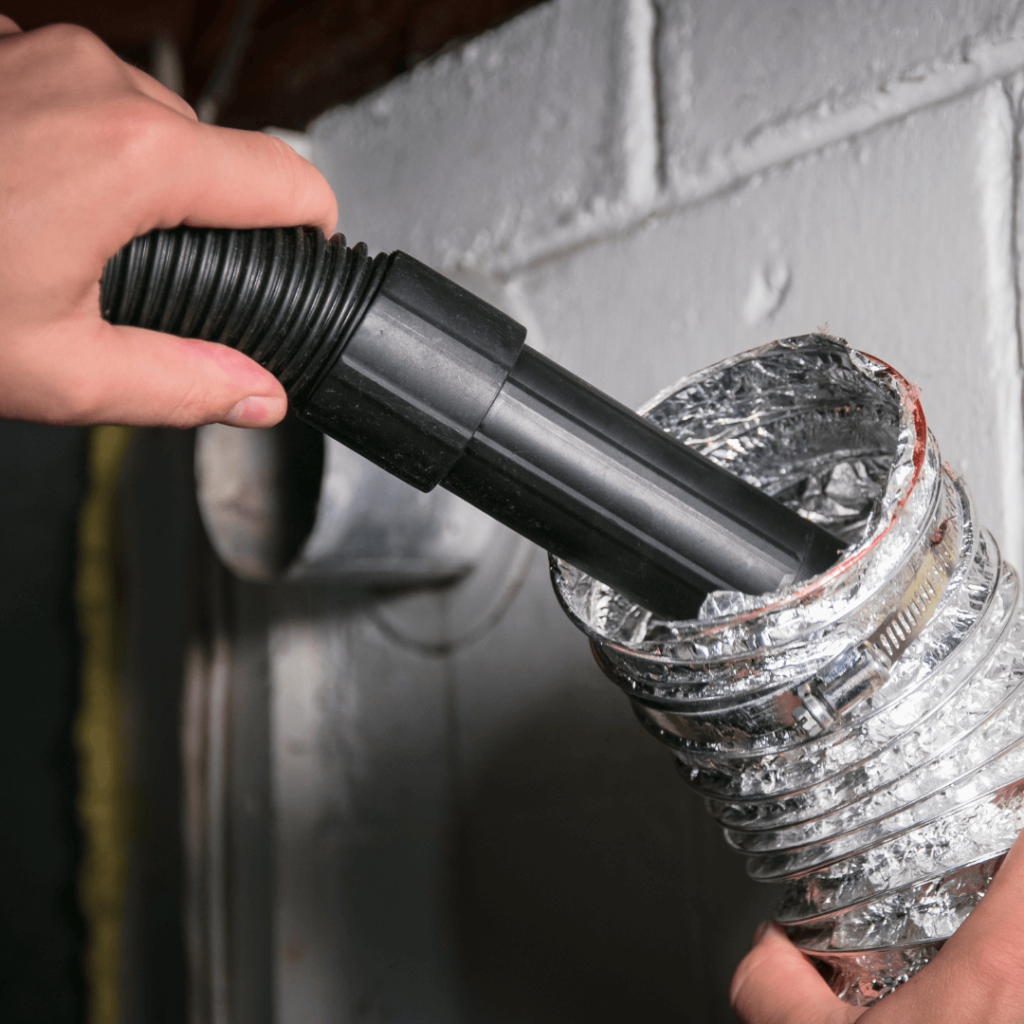If you’re like most homeowners, your clothes dryer is one of those appliances that you tend to take for granted—until it stops working, of course. It sits quietly in the corner of your laundry room, making sure your clothes come out warm, soft, and dry, time after time. But just like any other household appliance, your dryer needs a little love and care to keep running smoothly. Whether you have a traditional vented dryer or a modern heat pump dryer, regular dryer maintenance can save you time, money, and the headache of a breakdown.
In this guide, I’ll walk you through the essential dryer maintenance tips that every homeowner should know. These tips are simple, actionable, and will go a long way in extending the life of your dryer. Plus, they’ll help you avoid costly repairs and ensure your dryer remains energy-efficient.
- Clean the Lint Trap After Every Load
- Check and Clean the Dryer Vent Regularly
- Inspect and Clean the Drum
- Keep the Dryer Level
- Examine the Dryer Belt
- Clean the Moisture Sensor
- Don’t Overload the Dryer
- Use Dryer Sheets Sparingly
- Keep the Dryer Area Clear
- Schedule Regular Professional Maintenance
- Conclusion
1. Clean the Lint Trap After Every Load
This is one of the easiest yet most important dryer maintenance tasks you can do. After each load, make it a habit to clean the lint trap. Lint buildup not only reduces your dryer’s efficiency but also poses a significant fire hazard. According to the National Fire Protection Association, nearly 16,000 dryer fires occur annually in the U.S. alone, and many of them are caused by lint accumulation.
To clean the lint trap, simply remove it from your dryer, peel off the accumulated lint, and dispose of it. Every once in a while, wash the trap with soapy water to remove any fabric softener residue that may block the airflow.
Pro Tip: If you notice your dryer takes longer to dry clothes, this could be an early sign that the lint trap isn’t the only part that needs attention. More on that next.

2. Check and Clean the Dryer Vent Regularly
The dryer vent is often overlooked when it comes to dryer maintenance, but it’s crucial to your dryer’s performance and safety. The vent carries moisture and lint out of the dryer and your home. Over time, lint can accumulate inside the vent, leading to reduced efficiency, higher energy bills, and even fire risks.
How often should you clean your dryer vent? It depends on how frequently you use your dryer, but a good rule of thumb is at least once a year. If you have a large household and your dryer is running constantly, you may want to check it every six months.
You can clean the vent yourself by disconnecting it from the dryer and using a dryer vent brush or vacuum attachment to remove lint. Alternatively, you can hire a professional service if you’re not comfortable doing it yourself.
Pro Tip: If your clothes are still damp after a full cycle or the outside of the dryer feels unusually hot, it might be time to clean the vent.

3. Inspect and Clean the Drum
While the lint trap and vent capture most of the lint, some lint particles may still get stuck inside the dryer’s drum. This can cause your dryer to work harder, leading to more wear and tear on the appliance.
To clean the drum, use a damp cloth with a bit of mild detergent. Wipe down the interior and pay special attention to the areas around the door seal. Once the drum is clean, make sure to dry it thoroughly to prevent any mildew from forming.
While you’re inspecting the drum, keep an eye out for any foreign objects like buttons, coins, or small toys that might have fallen out of your clothes. These items can cause damage if left in the dryer.
4. Keep the Dryer Level
It’s easy to overlook, but keeping your dryer level is another important aspect of dryer maintenance. An unbalanced dryer can vibrate excessively, leading to unnecessary wear on internal components. Plus, it can make an annoying amount of noise!
To check if your dryer is level, place a carpenter’s level on top of the appliance. If it’s off-balance, adjust the dryer’s feet until it sits evenly. Most dryers have adjustable legs for this exact reason.
Pro Tip: If your dryer is making loud, unusual noises during operation, checking its balance might solve the problem.

5. Examine the Dryer Belt
The dryer belt helps turn the drum and keeps your clothes tumbling during the drying cycle. Over time, this belt can wear out or even break, especially if it’s subjected to frequent use.
If you hear a loud squealing or grinding noise when your dryer is running, it might be a sign that the belt is worn. While inspecting or replacing a dryer belt might sound intimidating, it’s actually something you can do yourself with a few basic tools.
First, unplug your dryer (safety first!), then remove the front panel to access the belt. Check for any signs of wear, such as fraying or cracks. If the belt is damaged, it’s best to replace it. You can find replacement belts at most hardware stores or online.
Pro Tip: If you don’t feel confident in tackling this yourself, call a professional to do the job. Replacing a dryer belt isn’t too costly and can extend the life of your dryer significantly.
6. Clean the Moisture Sensor
If your dryer has an automatic drying function, it likely uses a moisture sensor to determine when your clothes are dry. Over time, fabric softener residue and lint can coat the sensor, making it less accurate. If your dryer keeps running even after your clothes are dry, a dirty sensor could be the culprit.
The moisture sensor is usually located inside the drum, often near the lint filter. To clean it, gently scrub the sensor with a soft cloth and a bit of rubbing alcohol. This will remove any residue and restore its sensitivity.
Pro Tip: Avoid using steel wool or any abrasive cleaners on the sensor, as this could damage it.
7. Don’t Overload the Dryer
We’ve all been guilty of overstuffing the dryer in an attempt to finish laundry faster, but this can actually do more harm than good. An overloaded dryer has to work harder to tumble your clothes, which puts extra strain on the motor, belt, and other components. Plus, it leads to longer drying times and uneven results.
To avoid overloading, stick to the dryer’s recommended capacity. As a general rule, leave about a quarter of the drum empty so that clothes have enough room to tumble freely.
Pro Tip: If you’re drying large items like bedding or towels, try breaking them up into smaller loads for better results.
8. Use Dryer Sheets Sparingly
While dryer sheets can make your clothes feel soft and smell fresh, using them too often can cause a waxy buildup on your dryer’s lint trap and moisture sensor. This buildup can reduce airflow and make your dryer less efficient.
Instead of relying on dryer sheets for every load, try using dryer balls, which help soften clothes naturally and reduce drying time. If you do use dryer sheets, clean your lint trap and moisture sensor more frequently to prevent buildup.

9. Keep the Dryer Area Clear
It’s not just the dryer itself that needs attention—keeping the area around your dryer clean is also part of good dryer maintenance. Lint, dust, and other debris can accumulate behind and underneath your dryer, which can pose a fire hazard and reduce airflow.
Every few months, move your dryer away from the wall and clean behind it. Use a vacuum cleaner to remove any lint or dust that may have gathered in hard-to-reach areas.
Pro Tip: When you’re cleaning behind your dryer, check the vent connection to ensure it’s securely attached.

10. Schedule Regular Professional Maintenance
Even with regular DIY maintenance, it’s a good idea to schedule professional dryer maintenance once a year. A technician can inspect parts of the dryer that are difficult to access, such as the heating element and motor. They’ll also check the dryer’s overall condition and make any necessary adjustments or repairs.
Regular professional maintenance can catch small issues before they turn into big problems, potentially saving you from costly repairs down the line.
Conclusion
Dryer maintenance doesn’t have to be complicated or time-consuming, but it’s crucial for keeping your dryer running efficiently and safely. By following these tips, you can extend the life of your dryer, prevent breakdowns, and even lower your energy bills. A little attention goes a long way when it comes to household appliances, and your dryer is no exception.
Next time you throw in a load of laundry, remember that a well-maintained dryer makes the difference between a quick, efficient dry cycle and a frustrating, time-consuming one. So take the time to care for your dryer—it’ll pay off in the long run!
For more maintenance and troubleshooting guides, read our blog.
You May Also Like
- How to Choose the Right Refrigerator Size for Your Home?
- Why Is My Washing Machine Not Draining Water?
- Why You Should Deep Clean Your Washer Dryer Once a Year?
- Inverter or Non-Inverter Air Conditioner: Which To Buy?
- What is the Right Air Conditioner Horsepower for Your Home?
- 5 Tips to Buy an Air Conditioner in Malaysia







